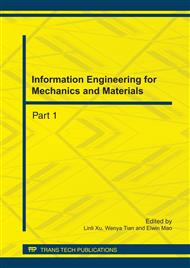[1]
MA Kang, XU Jin, ZHANG Zhi-long, WANG Lan-sheng, LI Chao-zheng. (2009). Research on advanced prediction and forecast of Xuefeng Mountain Highway tunnel., J. Rock and Soil Mechanics, Vol. 30(5): 1381-1386.
Google Scholar
[2]
YE Shaoyou, Lu Jun. (2006). The Fuzzy Comprehensive Evaluation for bidding in hydraulic project. , J. Engineering and Construction, Vol. 20(6): 765-767.
Google Scholar
[3]
LU Jun. (2006) . "{TTP}-254 Slope forecasting model and its research of application in the actual project. "{TTP}-254 Hefei University Of Technology:49-51.
Google Scholar
[4]
Li Daxin. (1999). Integrated application and interpretation of geophysical,. China University of Geosciences, Wuhan.
Google Scholar
[5]
Li Xiuzhen,Xu Qiang,Huang Runqiu,Tang Minggao.(2003)"{TTP}-254 Research on prediction criterion for temporary prediction of landslide. "{TTP}-254 J. The Chinese Journal of.
Google Scholar
[6]
Geological Hazard and Control, Vol. 14(4):6-10.
Google Scholar
[6]
Geophysical Survey Systems Inc. (2005). Inventor TerraSIRch SIR System-3000 User's Manual. , United States.
Google Scholar
[7]
Hu Shaowei, Wang Hongxia: Study on 3D finite bodies containing cracks using the finite element method of lines, Acta Mechanica Solida Sinica, Vol. 17(1), 2004: pp.83-94.
DOI: 10.1016/s0894-9166(15)30004-5
Google Scholar
[8]
K.T. Chau Y.L. Sze M.K. Fung W.Y. Wong E.L. Fong L.C.P. Chan. (2004). "{TTP}-254 Landslide hazard analysis for HongKong using landslide inventory and GIS. "{TTP}-254 J. Computers and Geosciences,Vol. 30(4):429-443.
DOI: 10.1016/j.cageo.2003.08.013
Google Scholar
[9]
Dai Qianwei, Liu Shaolin, Xiao Bin. (2000). A Discussion on the applied condition of GPR. , J. Geophysical and geochemical exploration, Vol. 24(2): 157-160.
Google Scholar
[10]
Dong Yanpeng, Kong Xiangchun. (2007). Analysis of factors affecting ground penetrating radar. , J. Equipment and Geophysical Penetrating, Vol. 17( 2): 130~133.
Google Scholar
[11]
Hu Shaowei, Brian Moran: Cracking analysis of fracture mechanics by the finite element of lines (FEMOL), Acta Mechanica Sinica, 21(5), 2005. 11, pp.495-502.
DOI: 10.1007/s10409-005-0059-1
Google Scholar


